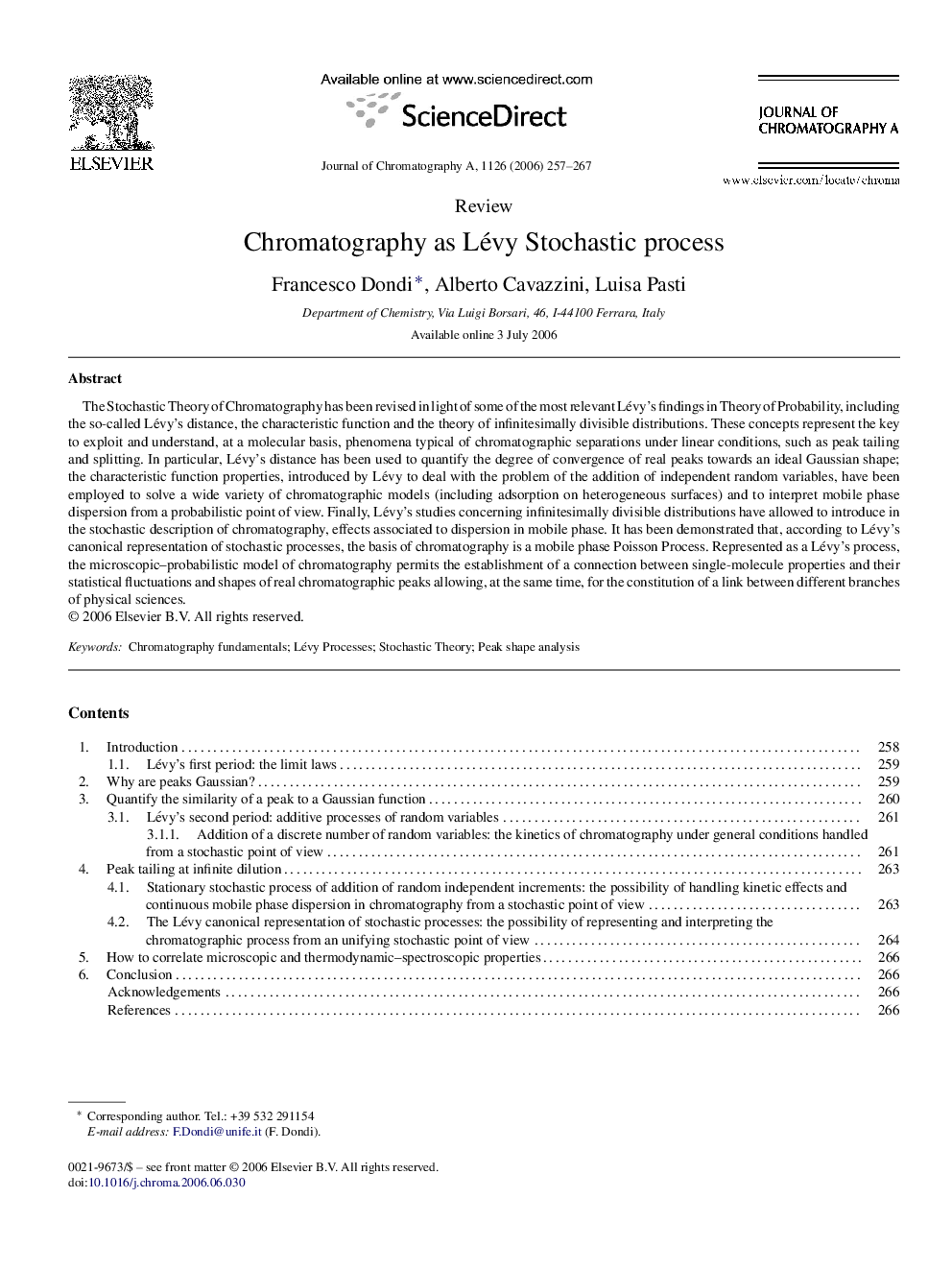| کد مقاله | کد نشریه | سال انتشار | مقاله انگلیسی | نسخه تمام متن |
|---|---|---|---|---|
| 1209879 | 1493764 | 2006 | 11 صفحه PDF | دانلود رایگان |

The Stochastic Theory of Chromatography has been revised in light of some of the most relevant Lévy's findings in Theory of Probability, including the so-called Lévy's distance, the characteristic function and the theory of infinitesimally divisible distributions. These concepts represent the key to exploit and understand, at a molecular basis, phenomena typical of chromatographic separations under linear conditions, such as peak tailing and splitting. In particular, Lévy's distance has been used to quantify the degree of convergence of real peaks towards an ideal Gaussian shape; the characteristic function properties, introduced by Lévy to deal with the problem of the addition of independent random variables, have been employed to solve a wide variety of chromatographic models (including adsorption on heterogeneous surfaces) and to interpret mobile phase dispersion from a probabilistic point of view. Finally, Lévy's studies concerning infinitesimally divisible distributions have allowed to introduce in the stochastic description of chromatography, effects associated to dispersion in mobile phase. It has been demonstrated that, according to Lévy's canonical representation of stochastic processes, the basis of chromatography is a mobile phase Poisson Process. Represented as a Lévy's process, the microscopic–probabilistic model of chromatography permits the establishment of a connection between single-molecule properties and their statistical fluctuations and shapes of real chromatographic peaks allowing, at the same time, for the constitution of a link between different branches of physical sciences.
Journal: Journal of Chromatography A - Volume 1126, Issues 1–2, 8 September 2006, Pages 257–267